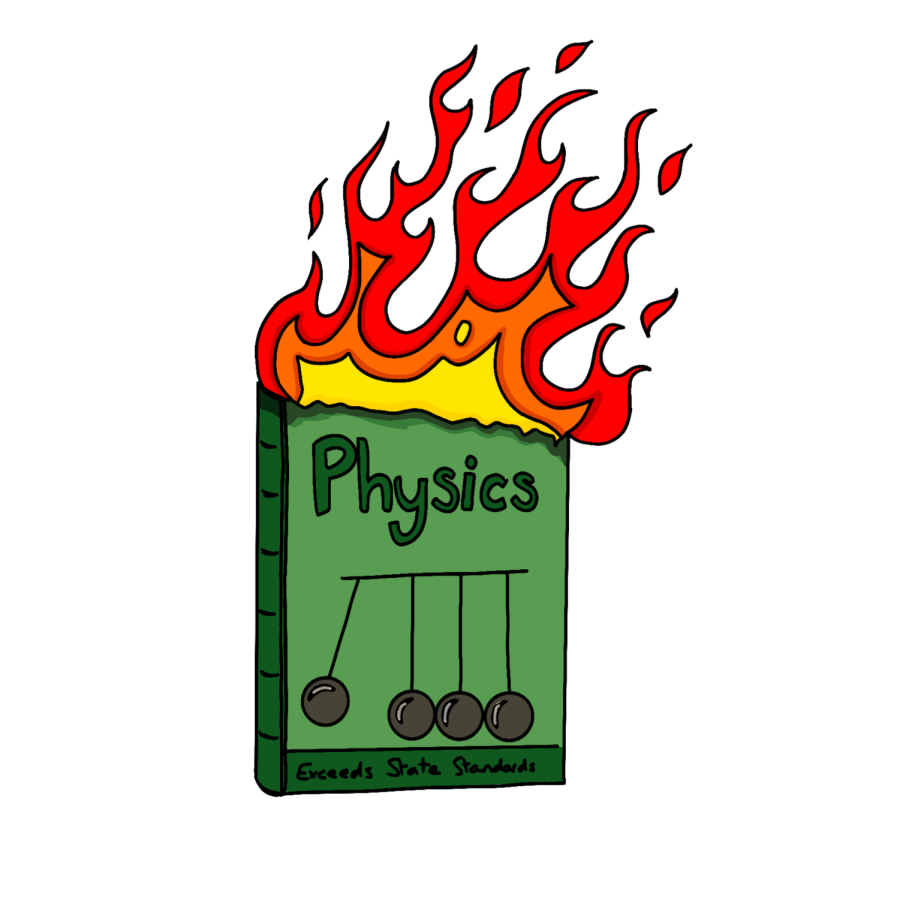Where are the textbooks?
Art by: Anna Fiddelke. A physics textbook on fire.
October 12, 2022
Although they might not be pageturners, textbooks are a staple of high school life. However, textbook use is on a steep decline. Increased access to technology at Edina High School and a year of distance learning have decreased the number of mandatory textbooks, which are replaced with PDF documents, screencasts, and Edpuzzles.
Fewer textbooks to carry around lightens students’ backpacks and is one less thing to forget to bring to class. But the switch to digital information provides fewer options for students with different learning styles. “Everything is available online and it’s just it’s difficult for me to flip between tabs… I get distracted easily,” senior Ruthie Conry said.
The removal of textbooks from the classroom is a double-edged sword. Students like Conry prefer a physical textbook while others believe that the removal is beneficial for both them and their learning. “I would prefer just PDFs of online information being summarized in a slideshow. I wouldn’t want to carry a big textbook every day,” junior Gavin Sendar said.
Although technological alternatives may be easier for some students to consume, the complete swap from physical textbooks may be doing more harm than good. “It’s not inclusive to different learning styles. It’s not suiting every student’s needs,” said Conry.
To truly understand the current state of textbook use at EHS, it’s important to look to the past. In 1999, textbooks were the only option in the absence of Adobe Acrobat reader. The lack of an online option may have led to back problems, but nothing beats reliability. “Physical books do really well and they don’t run out of batteries. They don’t break down or require software updates,” EHS alum Pete Sinesio said.
And although this is true, it’s doubtful that students would like to go back to a cumbersome bag full of five hundred-page books. “It’s the modern age. And I think digital learning should be part of the educational process,” Sinesio said.
The inaccessibility of physical books to students may not be here, but it’s on the horizon, and we must determine a compromise. This is not simply a case of “if it ain’t broke, don’t fix it,” but it’s also not time for stagnancy. The textbook cannot go. There are too many students who remain reliant on their presence both in the classroom and at home. Paper textbooks are still accessible at EHS, but the rate at which textbooks are disappearing from classrooms must come to a halt. The school’s facade of personal learning styles will lose all merit if the school continues on the path of a completely electronic textbook. There is no denying the ease at which both teachers and students can use textbook alternatives. Even so, the easy answer is almost never the best answer.



